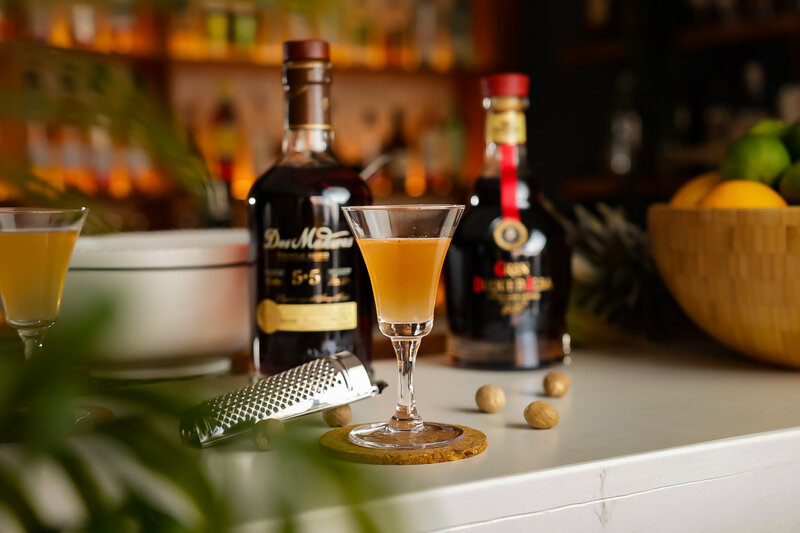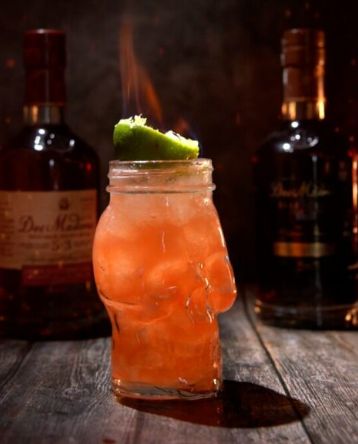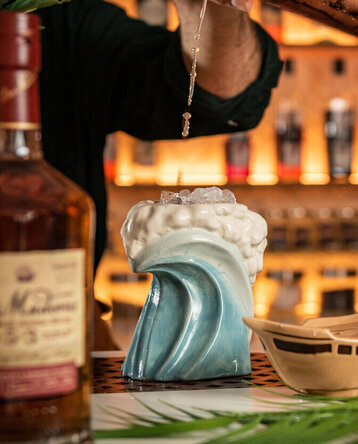29 May Regent’s Punch – Rum and Tea cocktail Recipe
Which dark rum is best for Regent's Punch
In Wondrich’s account, he makes mention of the use of a mellow Jamaican style of rum as well as Cognac and Arrack. For our version, the best balance of attributes comes from a blend of our Dos Maderas 5+3, Gran Duque de Alba and Batavia Arrack. The 5+3 adds a nutty, spicy and elegant side to the richer elements of the brandy and the funkier elements of the Arrack.

About Dos Maderas 5+3 Rum
Dos Maderas 5+3 Rum blends the lighter Baja Rum with the richer Guyana style and ages for 5 years in the Caribbean followed by 3 years in Jerez, Spain in Palo Cortado casks. The smooth character of the 5+3 is awash with pleasant vanilla, hazelnut, coconut and subtle maple.
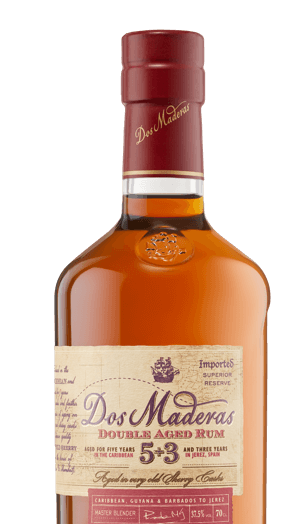
About Dos Maderas 5+3 Rum
Dos Maderas 5+3 Rum blends the lighter Baja Rum with the richer Guyana style and ages for 5 years in the Caribbean followed by 3 years in Jerez, Spain in Palo Cortado casks. The smooth character of the 5+3 is awash with pleasant vanilla, hazelnut, coconut and subtle maple.
Regent's Punch ingredients
- 5 oz. / 150 ml of Dos Maderas 5+3
- 5 oz. / 150 ml of Gran Duque de Alba Brandy
- 2 oz. / 60 ml of Batavia Arrack
- 2 bottles of Brut Champagne or other Brut Sparkling Wine
- 1 cup of sugar
- 1 ripe pineapple
- 2 lemons
- 3 oranges
- 16 oz. / 480 ml Cold Green tea
- 1 large ice block
- Freshly grated nutmeg for garnish
Regent's Punch Recipe - Step by step how to prepare a dark rum Regent's Punch
- Freeze 2 quarts of water into an ice block (overnight). If you have space, you can do this directly in your punch bowl. Otherwise, a loaf pan works well.
- Break down your ripe pineapple by removing the rind and core and cutting into one-inch pieces.
- Prepare your pineapple syrup by simmering 4 oz. / 120 ml of sugar in 4 oz. / 120 ml of hot water. Stir until fully integrated and add 1 cup of pineapple chunks. Let macerate for at least 8 hours. Then strain out your macerated fruit. Keep refrigerated and it should last a week.
- Create an oleo saccharum by thinly removing peels from lemons and oranges and add these peels to 4 oz. / 120 ml of sugar. Lightly muddle and let sit for about an hour. Then remove peels.
- Brew 16 oz. / 480 ml of Green tea and let cool.
- Freshly juice your citrus, roughly 6 oz. / 180 ml of juice & strain out pulp
- Combine rum, brandy, arrack, 2 oz. / 60 ml pineapple syrup, oleo saccharum, citrus and tea into a punch bowl and stir.
- Roughly 15-20 minutes or so before serving, add your large ice block or pour into your punch bowl with the ice block. Slowly pour in your 2 bottles of chilled Brut Champagne.
- Add the rest of your pineapple pieces to bowl
- Ladle servings into punch cups and garnish with freshly grated nutmeg.
Regents Punch cocktail history and origins
The Regent Punch is aptly named as it was a recipe associated with King George IV of England, former Prince of Wales named Prince Regent while his father King George III was incapacitated from illness. That’s right, the Regent’s Punch was born straight out of the Regency Era of the British monarchy, (5 February 1811 – 29 January 1820), aka the Jane Austen era. Although never originally documented, it made its way stateside by way of word of mouth and was immensely in vogue all over for some time. In David Wondrich’s book, “Punch: The Delights (and Dangers) of the Flowing Bowl,” he mentions two credible attributions with mostly similar accounts: a credit to “P. Watier, Royal Lodge, 1820” in William Terrington’s 1869 “Cooling Cups and Dainty Drinks, and another published nod by way of Eliza Acton in her 1845 published account “Modern Cookery for Private Families” where it is listed as a relied upon source from someone who made the punch daily for the prince’s table at Carlton palace for six months.” Wondrich also tags Edgar Allan Poe’s quote from an 1839 “Gentleman’s Magazine” mentioning that the Regent’s Punch was “long the fashionable tipple at the symposiums of the elite.” To make the punch, you’ll need a bit more than what was considered a standard ingredient list for a punch maker of the time.

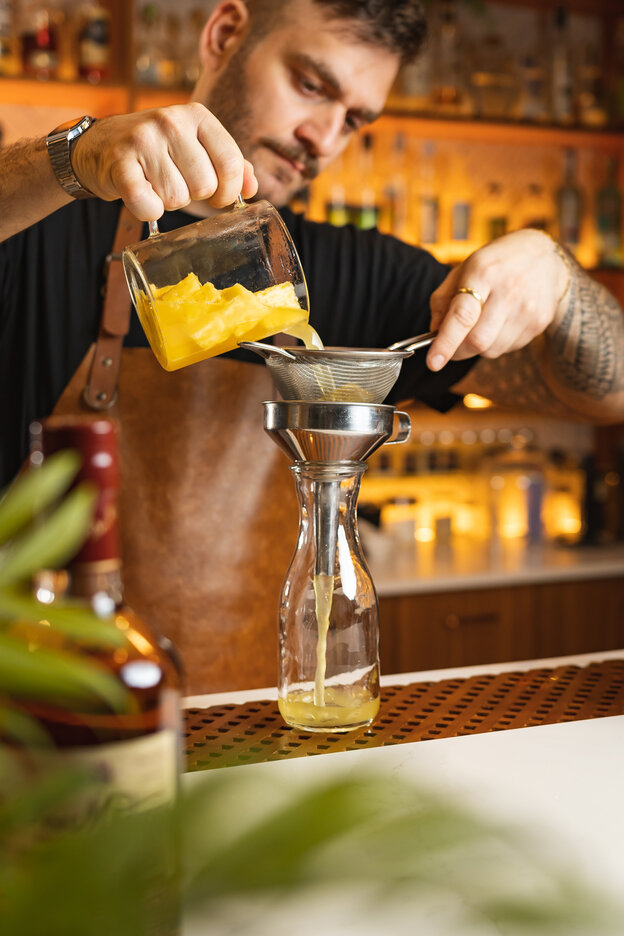
Regent's Punch cocktail Variations and types
Variations on a Regent’s Punch usually come in the form of switching in and out varying types of rum, arrack or brandy, but sometimes one could sub in Madeira for a less alcoholic variation, as recommended here by Wondrich via Esquire.
Other variations that are common involve using pineapple juice and Maraschino liqueur in lieu of creating a pineapple syrup. This will result in a fruitier version like this Punch House Regent Punch in Chicago.
FAQ
Common knowledge has led us to believe that the term punch is an english derivative of the Hindi word for “five” or “Panch” (Hindi पाँच (pāñć) since the origins of the beverage grew from this time period when Britain occupied India and the fact that Punch recipes contain 5 ingredients: spirit, citrus, sugar, water and spice.
Today’s usage of the term “cocktail” has grown into a much larger category or idea than it was first created as. The original definition was a stimulating beverage with spirits, sugar, water and bitters. Similarly, the “punch” definition is one that contains five ingredients: spirit, citrus, sugar, water and spice. However today, cocktails are both riffs on Martinis & Manhattans but also essentially punch cups, highballs and even flips.
Rum punch came about in the 17th century as an alternative to beer rations on ships enjoyed by sailors and is most often associated with the British East India Company as well as later It found its way to Britain where it became a party staple drink made with rum, citrus and spices served in massive punch bowls.
Cocktails with Dos Maderas 5+3
Sorry, no posts matched your criteria.


